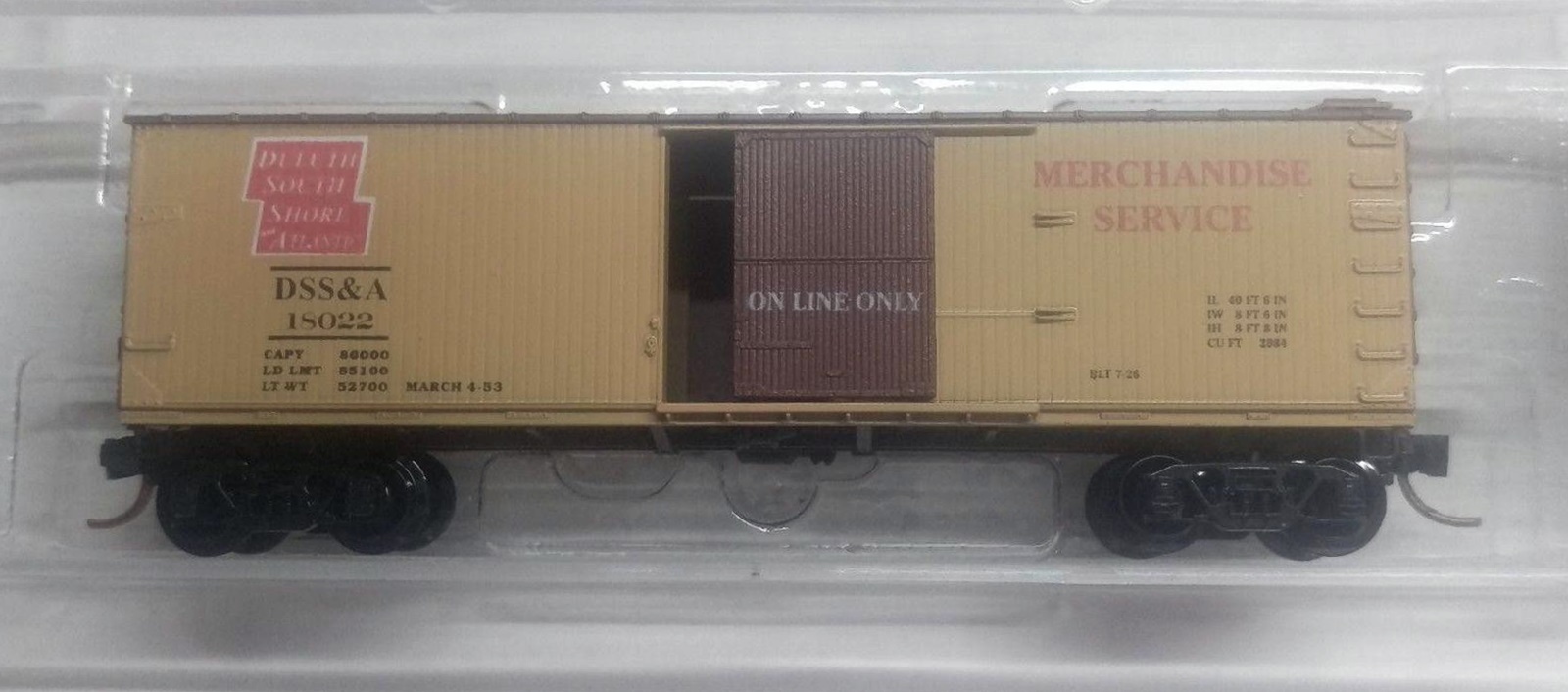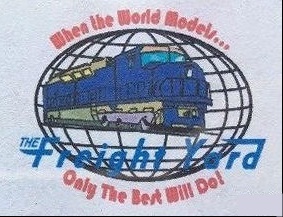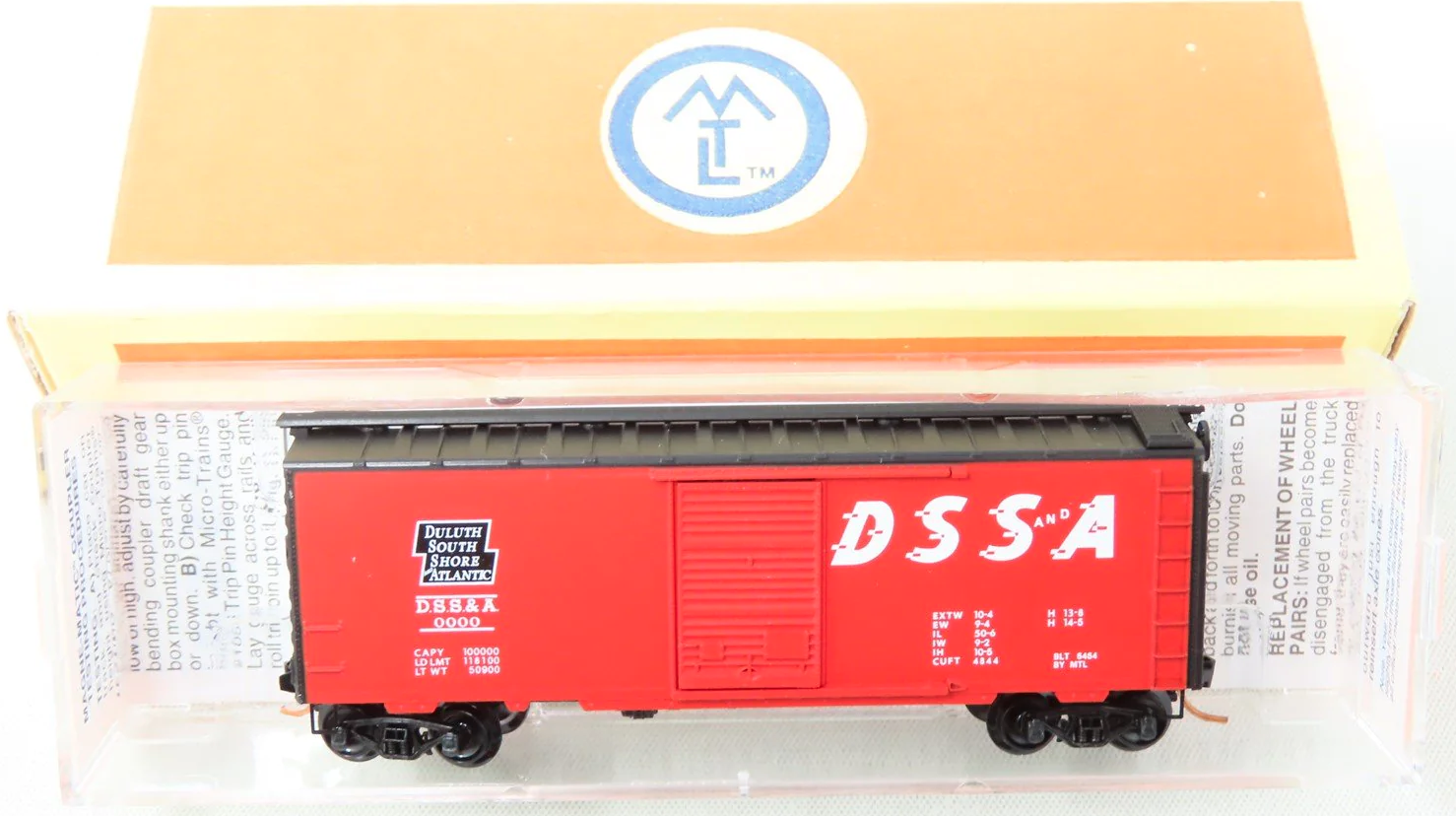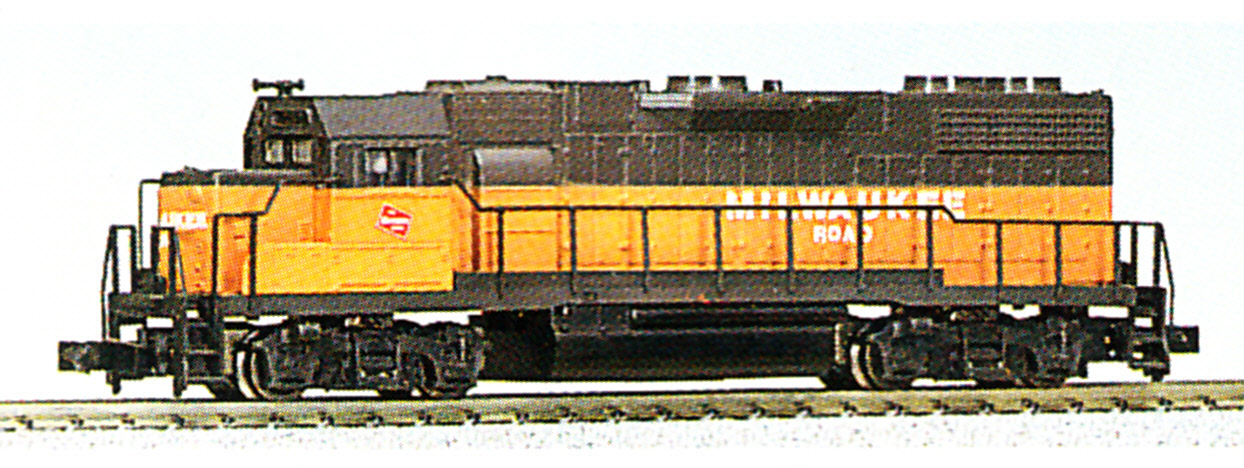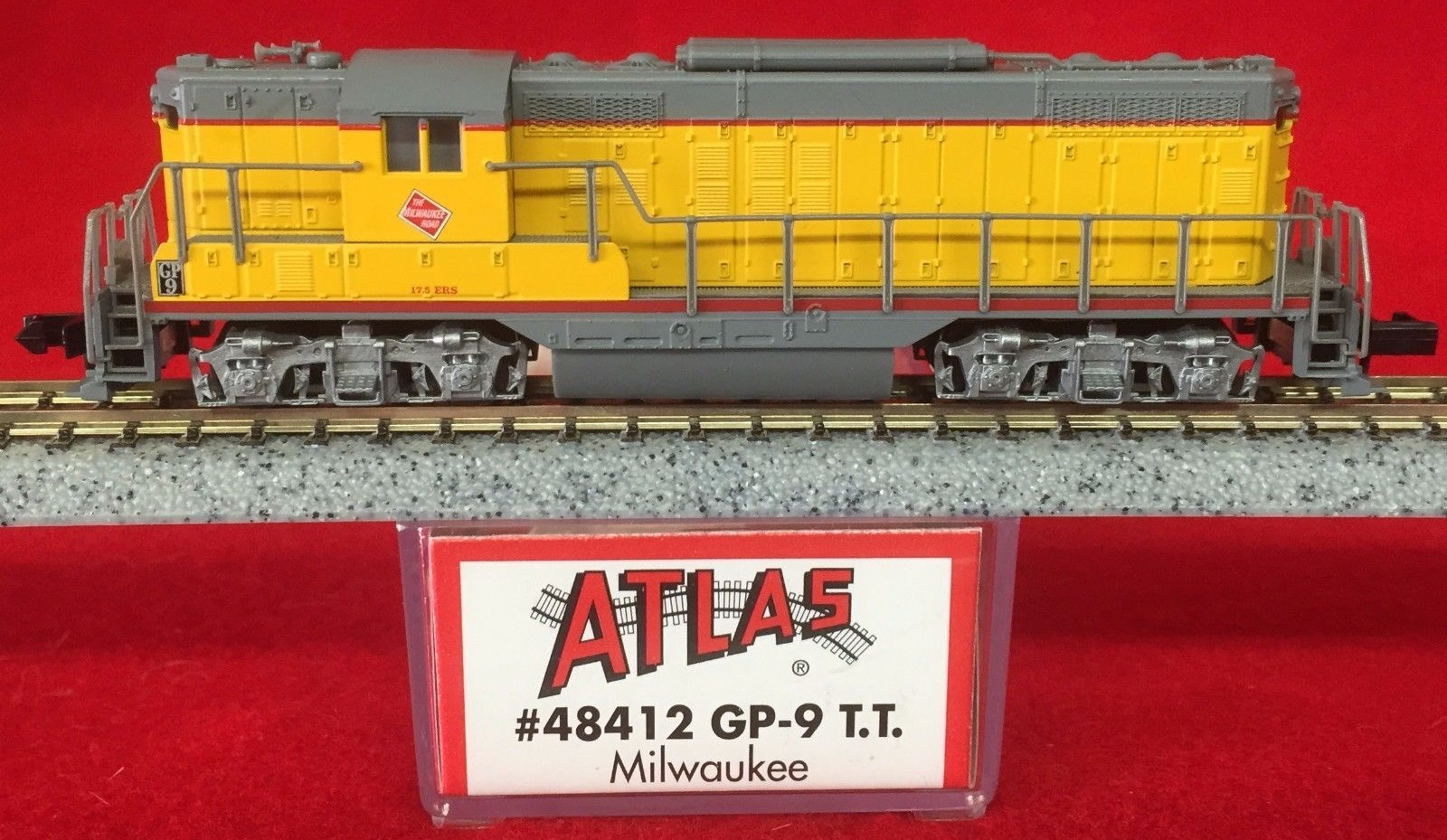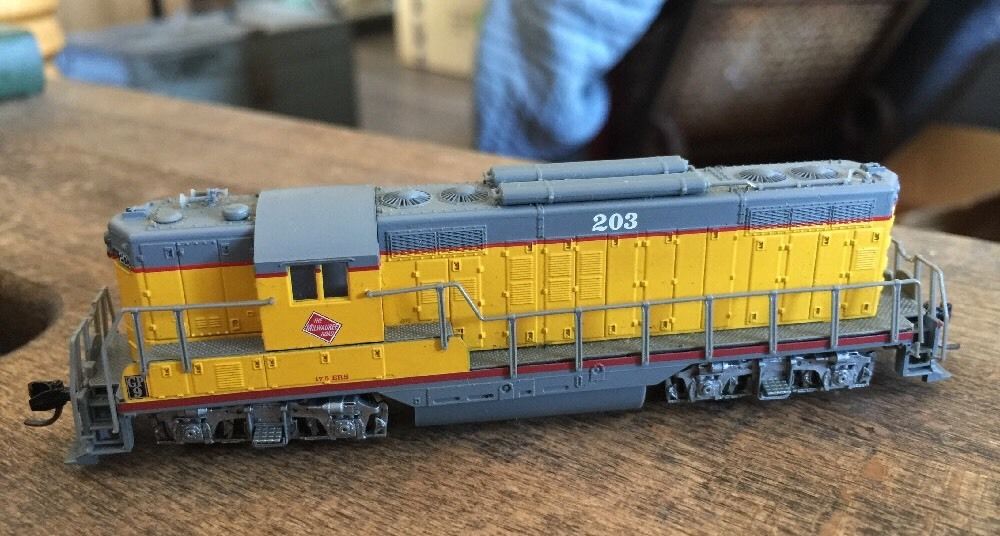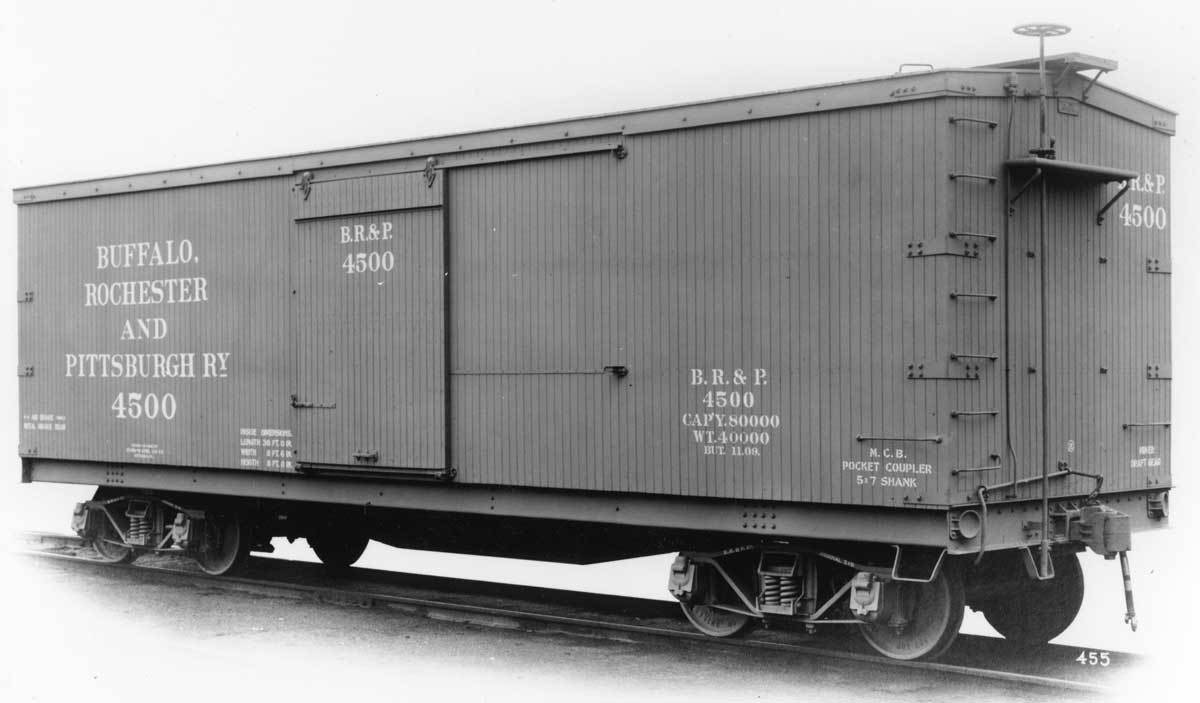Specific Item Information: Six (6) produced in this series 2646A-F. Road numbers unknown.
Model Information: Horizontal Brake Wheel is equivalent to Side-Mounted Brake Wheel. The wheel itself is vertical.
Prototype History: Double sheathed all-wood boxcars in 34', 36' or 40' length were built with trussrods into the 1900's. By about 1910-15 cars often were being built of wood but with steel underframes. BTW many early boxcars were only about 8-1/2' high, though taller 10' cars were beginning to be built by the WW1 era (like the USRA wood boxcar) but that didn't become the norm until the late 1930's.
Later in the 20's-30's, some cars were built with double or single sheathed woodsides but steel underframe, roof and ends. In the later 30's into the 40's some older cars built with wood except for the steel underframes were rebuilt with steel ends and roofs. Some of these cars with steel roof and ends (either new or rebuilt) lasted into the 1960's.
During WW2, steel was in short supply, so some new boxcars were built with steel roof and ends, but wood sides. These too sometimes lasted into the "diesel era", although many were rebuilt with steel sides after the war.
Later in the 20's-30's, some cars were built with double or single sheathed woodsides but steel underframe, roof and ends. In the later 30's into the 40's some older cars built with wood except for the steel underframes were rebuilt with steel ends and roofs. Some of these cars with steel roof and ends (either new or rebuilt) lasted into the 1960's.
During WW2, steel was in short supply, so some new boxcars were built with steel roof and ends, but wood sides. These too sometimes lasted into the "diesel era", although many were rebuilt with steel sides after the war.
Road Name History: 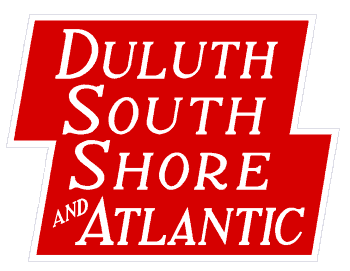 The DSS&A dates to 1887 and was chartered to build from Duluth, Minnesota eastward across Michigan’s upper peninsula, through Marquette to Sault Ste. Marie and St. Ignace. Of course there were a number of connections in Duluth. Sault Ste. Marie had a connection to Canadian Pacific and St. Ignace had car ferry service across the Mackinac Straights to a few lines in Michigan’s lower peninsula. In 1888, Canadian Pacific bought control of the company.
The DSS&A dates to 1887 and was chartered to build from Duluth, Minnesota eastward across Michigan’s upper peninsula, through Marquette to Sault Ste. Marie and St. Ignace. Of course there were a number of connections in Duluth. Sault Ste. Marie had a connection to Canadian Pacific and St. Ignace had car ferry service across the Mackinac Straights to a few lines in Michigan’s lower peninsula. In 1888, Canadian Pacific bought control of the company.
Traffic was intended to be iron and copper ore, and forest products. Other lines building into the region took most of the ore traffic, leaving the DSS&A the forest products traffic. The DSS&A paid dividends to parent Canadian Pacific in just two narrow windows over the next 65 years.
As for passenger service, locals served the mining and logging communities along the line. The closest thing to a name train was the DSS&A operation of the Duluth to Calumet, Michigan end of Milwaukee Road’s Copper Country Limited. All passenger service ended in 1958, and DSS&A’s Budd RDC’s went to parent Canadian Pacific.
The most modern steam power was in the form of former New York Central Mikados. DSS&A started buying diesels in 1947 with Alco RS1’s for use as switchers plus units with steam generators to replace steam on the passenger runs. Later, they picked up Baldwin RT series center cab transfer diesels for road service (go figure.) They were down much of the time with cracks in the frame and engine block. So DSS&A went back to Baldwin for DRS series 6-axle hood units for road service. These were operated in long-hood-forward pairs. Although the RS1’s had been delivered in plain black with yellow zebra nose stripes and yellow initials, the Baldwins were delivered in a fancy yellow, green, and Chinese red. The RS1s were repainted in this scheme as they came due for shopping. Ultimately, they did begin lashing together 3-unit sets of RS1’s for road service as well.
On December 30, 1960, Canadian Pacific’s US holdings in the area were merged. This included the Duluth South Shore & Atlantic, the Minneapolis St. Paul & Sault Ste. Marie (popularly known as Soo Line), and the original Wisconsin Central. Ironically, it’s the DSS&A’s corporate charter that was the survivor of the merger but the name of the combined line became “Soo Line Railroad.”

Traffic was intended to be iron and copper ore, and forest products. Other lines building into the region took most of the ore traffic, leaving the DSS&A the forest products traffic. The DSS&A paid dividends to parent Canadian Pacific in just two narrow windows over the next 65 years.
As for passenger service, locals served the mining and logging communities along the line. The closest thing to a name train was the DSS&A operation of the Duluth to Calumet, Michigan end of Milwaukee Road’s Copper Country Limited. All passenger service ended in 1958, and DSS&A’s Budd RDC’s went to parent Canadian Pacific.
The most modern steam power was in the form of former New York Central Mikados. DSS&A started buying diesels in 1947 with Alco RS1’s for use as switchers plus units with steam generators to replace steam on the passenger runs. Later, they picked up Baldwin RT series center cab transfer diesels for road service (go figure.) They were down much of the time with cracks in the frame and engine block. So DSS&A went back to Baldwin for DRS series 6-axle hood units for road service. These were operated in long-hood-forward pairs. Although the RS1’s had been delivered in plain black with yellow zebra nose stripes and yellow initials, the Baldwins were delivered in a fancy yellow, green, and Chinese red. The RS1s were repainted in this scheme as they came due for shopping. Ultimately, they did begin lashing together 3-unit sets of RS1’s for road service as well.
On December 30, 1960, Canadian Pacific’s US holdings in the area were merged. This included the Duluth South Shore & Atlantic, the Minneapolis St. Paul & Sault Ste. Marie (popularly known as Soo Line), and the original Wisconsin Central. Ironically, it’s the DSS&A’s corporate charter that was the survivor of the merger but the name of the combined line became “Soo Line Railroad.”
Brand/Importer Information: The Freight Yard was a hobby shop that did custom decoration and special runs of other manufacturers' N Scale products. It sold its custom products under several brands or collections: Premiere Editions, by The Freight Yard and Dreams Design.
It was located in Anaheim, California and then moved to 2006 in Phoenix, Arizona.
Established in the late 1980s, it stopped business under this name by the end of the 2000s.
The Freight Yard was owned and operated by Darren J. Cohen. Darren is now operating North Valley Trains.
The Freight Yard / Premiere Editions runs are usually available in series of two to twelve different numbers (suffixed A to M, with I not used).
The first two digits of the stock number correspond to the release year (9x being 199x, and 2x being 200x).
It was located in Anaheim, California and then moved to 2006 in Phoenix, Arizona.
Established in the late 1980s, it stopped business under this name by the end of the 2000s.
The Freight Yard was owned and operated by Darren J. Cohen. Darren is now operating North Valley Trains.
The Freight Yard / Premiere Editions runs are usually available in series of two to twelve different numbers (suffixed A to M, with I not used).
The first two digits of the stock number correspond to the release year (9x being 199x, and 2x being 200x).
Manufacturer Information:  Micro-Trains Line split off from Kadee Quality Products in 1990. Kadee Quality Products originally got involved in N-Scale by producing a scaled-down version of their successful HO Magne-Matic knuckle coupler system. This coupler was superior to the ubiquitous 'Rapido' style coupler due to two primary factors: superior realistic appearance and the ability to automatically uncouple when stopped over a magnet embedded in a section of track. The success of these couplers in N-Scale quickly translated to the production of trucks, wheels and in 1972 a release of ready-to-run box cars.
Micro-Trains Line split off from Kadee Quality Products in 1990. Kadee Quality Products originally got involved in N-Scale by producing a scaled-down version of their successful HO Magne-Matic knuckle coupler system. This coupler was superior to the ubiquitous 'Rapido' style coupler due to two primary factors: superior realistic appearance and the ability to automatically uncouple when stopped over a magnet embedded in a section of track. The success of these couplers in N-Scale quickly translated to the production of trucks, wheels and in 1972 a release of ready-to-run box cars.
Micro-Trains Line Co. split off from Kadee in 1990 to form a completely independent company. For this reason, products from this company can appear with labels from both enterprises. Due to the nature of production idiosyncrasies and various random factors, the rolling stock from Micro-Trains can have all sorts of interesting variations in both their packaging as well as the products themselves. When acquiring an MTL product it is very important to understand these important production variations that can greatly enhance (or decrease) the value of your purchase.
Please consult our Micro-Trains Collector's Guide

Micro-Trains Line Co. split off from Kadee in 1990 to form a completely independent company. For this reason, products from this company can appear with labels from both enterprises. Due to the nature of production idiosyncrasies and various random factors, the rolling stock from Micro-Trains can have all sorts of interesting variations in both their packaging as well as the products themselves. When acquiring an MTL product it is very important to understand these important production variations that can greatly enhance (or decrease) the value of your purchase.
Please consult our Micro-Trains Collector's Guide
Item created by: Alain LM on 2022-12-04 06:03:48. Last edited by Alain LM on 2022-12-04 06:05:09
If you see errors or missing data in this entry, please feel free to log in and edit it. Anyone with a Gmail account can log in instantly.
If you see errors or missing data in this entry, please feel free to log in and edit it. Anyone with a Gmail account can log in instantly.


